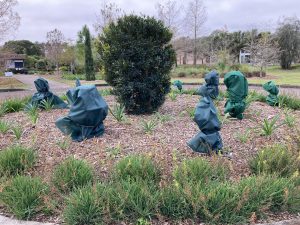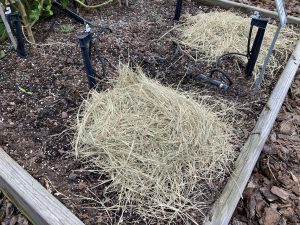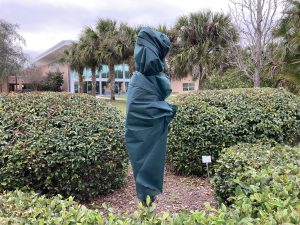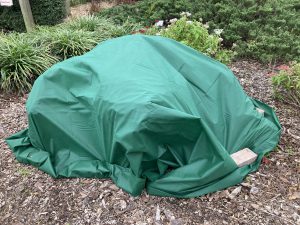Worried about the cold weather and if your plants will get injured in the freeze? Cold sensitive plants can be protected from injury or the amount of damage reduced if you give them some protection from the cold.
What plants need to be protected?
Tropical plants, tender vegetables, and some types of flowers can benefit from some protection. This includes orchids, crotons, Ti plants, tropical fruit trees, tomatoes, peppers, lettuce, and flowers, including begonias, impatiens, cosmos, zinnias, and pentas. Tropical palms like coconut, Bismarck, and date palms are also susceptible to cold injury.
Cold hardy plants
Most Florida native plants will be able to withstand local conditions. Cold hardy vegetables including cabbage, collards, kale, snow peas, carrots, onions, beets, broccoli and cauliflower can withstand below freezing temperatures. Cold hardy flowers include sweet alyssum, snapdragon, pansy, coreopsis, blanket flower, and black-eyed Susan. Sub-tropical fruit trees like mulberry, peach, loquat, and fig will be fine.

Protecting your Plants
If the plant is in a container, move it indoors to your house, garage, or under cover of a tree. If you are not able to move the plant, you should cover it with a frost cloth. Cloth is better than plastic. Use bedsheets, blankets, towels, or buy frost cloth from a hardware store.

Protecting Palms from Cold
For palm trees, the most important part to protect is the young spear leaf that comes from the center of the palm. That is the growing tip of the palm and if the spear leaf is killed the rest of the palm may die. To protect palms that are sensitive to cold, wrap the palm leaves together and wrap in frost cloth. For more on cold weather and palms see our Cold Damage on Palms EDIS publication.

Protecting Tropical Fruit Trees from Cold
If you have a grafted fruit tree you want to protect, the most important thing is to wrap the trunk and cover the grafted part. This way even if the top suffers from some cold injury, it can grow back. If you want to protect the entire fruit tree, drape frost cloth over the whole thing and bring it down so it touches the ground. This will trap the ground heat inside of your cover.
Protecting Flowers and Vegetables from Cold
Small herbaceous plants like flowers and vegetables can be covered in frost cloth and some rocks put on the corners to weigh it down. Another strategy is covering the entire plant with straw or mulch to protect the plant and hold in the heat from the ground.

More on Cold Protection of Landscape Plants: https://edis.ifas.ufl.edu/publication/MG025
Want to learn more? Check out horticulture classes offered by UF/IFAS Extension Orange County at www.ocextension.eventbrite.com. Read about Florida-Friendly Landscaping™ https://ffl.ifas.ufl.edu/. Follow us on Facebook https://www.facebook.com/GardenFlorida/ and Instagram https://www.instagram.com/oc_extension/ and visit our website https://sfyl.ifas.ufl.edu/orange/home-lawns-landscapes-and-gardens/florida-friendly-landscaping/.
 3
3
